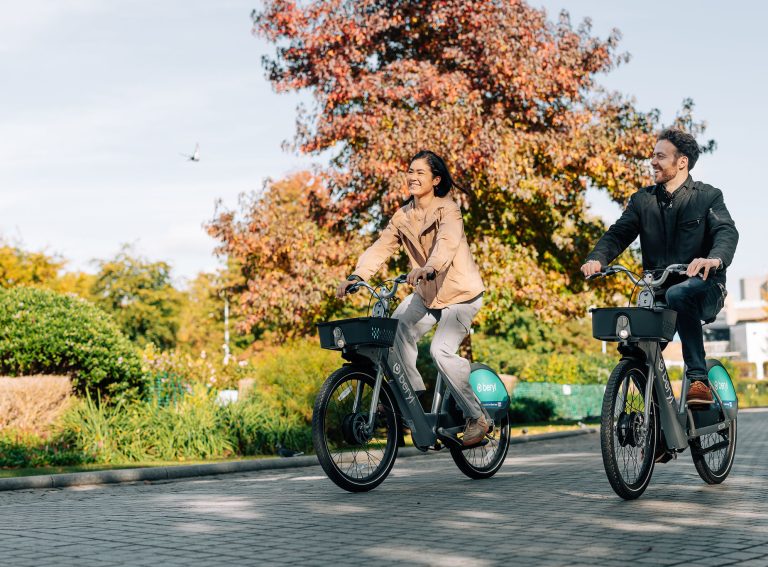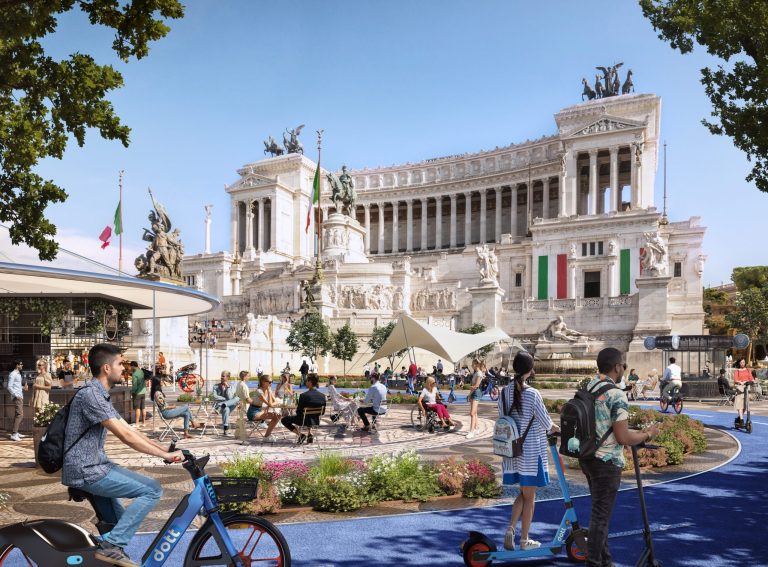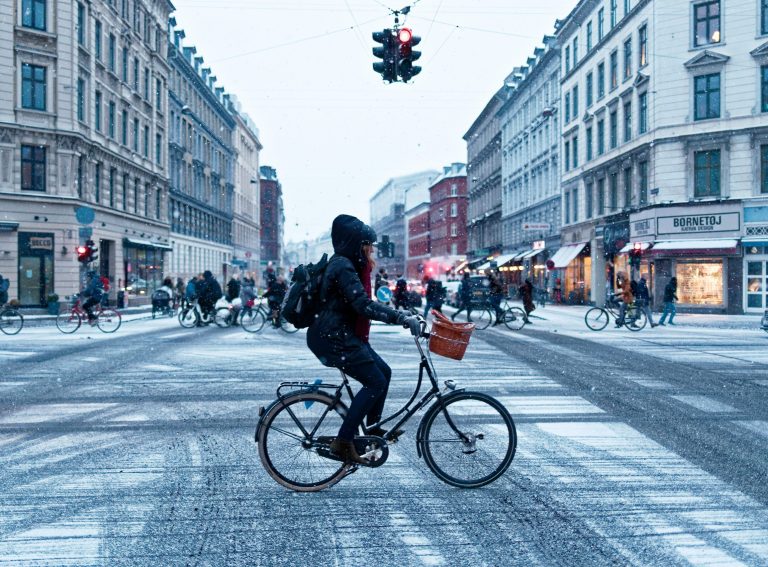Following Uber CEO Dara Khosrowshahi’s recent shock that the cost of a three-mile journey in New York cost over $50, I wanted to expand on the analysis to see the time and cost for various modes of transport across London, Paris and New York for the same-distance in morning rush-hour (08:30 AM).
In the heart of these bustling metropolises, efficient transportation, whether for commuting, business trips or leisure, has become integral to urban living.
The table below shows the findings followed by a collation of thoughts on each mode and the conclusions:
| London | Paris | New York | ||||
| Walk | €0 | 55mins | €0 | 55mins | €0 | 44mins |
| Cycle | £1.65-£6.30 | 26-45mins | €1.00 – €3.50 | 14-17mins | €4.00 | 24mins |
| Scooter | £4.40-£5.90 | 34-38mins | €3.80-€3.90 | 16-18mins | N/A | N/A |
| Moped | N/A | N/A | €4.30 | 15-17mins | $6.90 | 17mins |
| Car-Share | £8.70 | 42mins | N/A | N/A | N/A | N/A |
| Ride-Hailing | £17-£30 | 40mins | €10 – €15 | 23mins | $15-$23 | 26mins |
| Bus / Tram | £1.75 | 44mins | €2.10 | 24mins | $2.75 | 23mins |
| Tube / Subway | £2.80 | 20mins | €2.10 | 20mins | $2.75 | 23mins |
As we delve into the intricate web of transportation options across these iconic cities, a clear pattern emerges: public transport and micromobility solutions shine as quicker and more cost-effective choices. Let’s embark on a journey through these cities’ transportation landscapes to understand how the value of travel time, vehicle availability, and other factors shape the urban mobility experience.
The allure of public transport
London, Paris, and New York public transport systems stand as pillars of efficient urban mobility. With extensive networks of buses, subways and trains, these cities offer quick and reliable travel options to (most) of the city. Public transport systems consistently excel in providing cost-effective, shorter travel times compared to other transport modes due to dedicated lanes, minimal traffic congestion and high frequency.
While public transport, especially the tube/metro, misses the impact of road congestion, the mode can become heavily congested – especially during morning and evening rush hour. Rush-hour travels create discomfort during the journey, and although you may be able to check your emails or listen to a podcast, the ability to do business is drastically reduced. Depending on the weather, you may also arrive at your destination looking like you cycled in the rain. However, arriving at your destination in almost half the time at a tenth of the cost of the trade-off for millions of commuters is generally worth it.
The micromobility revolution
Micromobility solutions have transformed the urban landscape, including bicycles, electric scooters, and shared mobility services. These options offer eco-friendly alternatives, competitive travel times and cost savings. Micromobility capitalises on the time vs cost equations, allowing users to bypass traffic, reduce travel times, and reach their destinations efficiently.
London’s Santander Cycles, Paris’ Velib, and New York’s Citi Bike programmes have made cycling accessible and attractive for residents and tourists alike, with most rides costing £2.00 or less. Electric scooters have also rapidly gained popularity, offering a flexible mode of transportation that allows users to cover short distances swiftly. However, the impact of weather conditions and safe infrastructure can significantly decrease this option’s attractiveness.
The flexibility of ride-hailing: multitasking on the move
In urban mobility, ride-hailing services have carved out a unique niche by offering unparalleled flexibility to commuters. At the same time, they might only sometimes align perfectly with the principles of cost-saving and efficient travel time, the allure of multi-tasking while on the move must be considered. Ride-hailing services like Uber, Bolt and Lyft provide a convenient platform for passengers to transform their travel time into productive or leisurely moments.
Although ride-hailing trips often come at a higher cost than public transport or micromobility options, the convenience of door-to-door service and the ability to engage in other activities can be enticing. Business professionals can use this time to catch up on emails, make phone calls, or even prepare for meetings. Similarly, leisure travellers might appreciate catching up on their favourite podcasts or simply relaxing without navigating the responsibilities of driving or finding parking.
The waiting game and vehicle availability
While public transport and micromobility shine in terms of travel time, the concept of vehicle availability plays a crucial role in shaping the overall experience. Waiting times for non-public transport vehicles can significantly impact the total travel time, often negating the advantages of faster travel.
Shared mobility services like ride-hailing and car-sharing can suffer unpredictable waiting times due to traffic congestion and demand fluctuations. The convenience of these services is only possible if vehicles are readily available, thus challenging the notion of efficient travel, which is evident in the time and cost variance seen in London.
Private car ownership: a pricey proposition
Private car ownership offers the convenience of on-demand travel and personal space. Yet, it’s essential to recognise that the costs associated with private car ownership extend far beyond the sticker price. In cities like London where congestion charges, parking fees, and insurance costs can quickly accumulate, the actual financial impact of owning a car becomes apparent. With an estimated monthly cost of around £1000 in major cities, private car ownership does not align with the cost-saving ideals of efficient urban mobility, especially when factoring in space allocation vs people moved, sustainability and the amount of time that these vehicles are sat dormant.
At £33 per day, it is the most prohibitive option in terms of cost, travel time and ability to multi-task compared to all other options. The price is somewhat extreme, even with your private space protected against the elements.
Private bike ownership: a budget-friendly alternative
On the other end of the spectrum private bike ownership presents an attractive and budget-friendly option. With a relatively low monthly cost of around £33 per month (£1.10 per day), private bike ownership offers convenience and personal mobility without the hefty expenses associated with cars. However, it’s essential to acknowledge that private bikes might not be suitable for longer distances or unfavourable weather conditions, limiting their practicality.
The rise of micromobility subscription models: a viable solution
Subscription models for micromobility vehicles have emerged as a compelling alternative that bridges the gap between private ownership and shared mobility. These models offer the flexibility of on-demand access to bikes, scooters, and even electric vehicles without the financial burdens of ownership.
By paying a subscription fee that often falls within the range of £20-£100 per month, users can access a range of micromobility options. This model provides the advantages of private vehicle ownership, such as individual use and control, while avoiding the associated costs like maintenance, parking, and insurance. Subscription-based micromobility services also reduce urban congestion and emissions, addressing sustainability concerns.
To summarise
Assessing urban mobility options in global metropolises like London, Paris, and New York highlights the efficiency and cost-effectiveness of public transport and micromobility (owned or shared). These alternatives ensure faster travel, in contrast to the uncertainties of non-public transport. It must be noted that weather, time of day and other dynamic parameters remain influential, shaping commuter choices.
Amid urban evolution, a balance between speed, convenience, and sustainability is paramount. The interplay between robust public transport systems and the burgeoning shared mobility revolution holds promise in catering to diverse urban commuter needs.
Private vehicle allure persists. Yet, their expenses often outweigh benefits. Private bikes are budget-friendly but may fulfill only partial commuting needs. With urban populations swelling and transportation evolving, the ownership-access debate gains traction. Subscription-based micromobility and Mobility-as-a-Service models emerge as compelling solutions, marrying savings, convenience and eco-friendliness.
Ultimately, diverse trips call for various transport modes, often in combination. One certainty emerges: shared mobility prevails.
It’s important to note that weather and time of day can significantly influence transportation choices and are not included in the time/price analysis. Public transport has become more attractive in cities like London, where the weather is often rainy and chilly, providing a sheltered and climate-controlled environment. Conversely, cities like Paris and New York, with more favourable weather conditions, may see increased adoption.











